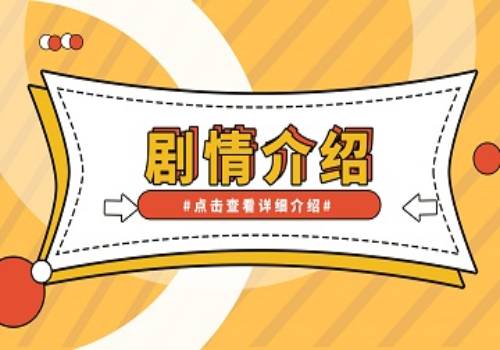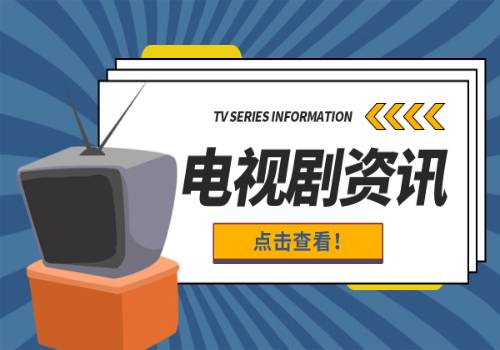世界热点评!summary范文300字(推荐13篇)
summary范文300字 第1篇
 【资料图】
【资料图】
【雅思阅读题型解析】填空题Summary题
总的来说,雅思阅读summary填空题主要有两种形式:
一种是单词填空式,这种形式主要针对文章全文或者部分段落写出的一篇摘要,空出若干空格,要求考生从文章中寻找相应的单词进行填空。
另一种是单词选择式,就是在第一种形式的基础上,额外提供了一个词库,要求考生从词库中选词填空。
下面环球雅思将详细讲解如何快速而有效的解答这两种形式的summary填空题。
一、单词填空式
解题策略:对于单词填空式题,一般把握三个关键信息: 逻辑关系词,语法属性,定位。
首先,观察空格前后是否有语义间有逻辑关系的连接词,即逻辑关系词推断。
这类表示空格前后内容逻辑关系的连接词主要包括:
①表示因果关系的词,如because,as,since,for,due to,thanks to,as a result of等。 在考试中,在因果关系中除了一些连接词的衔接外,还有一些表示因果关系的大词,如trigger,breed,induce,engender,generate,be responsible for,affect,determine等,这些词在语义中隐含了因果关系。 所以也是考生在解题中值得注意的。
②表示转折关系的词,如but,however,while,yet,instead,rather,whereas等
③表示让步关系的词,如despite,in spite of,although等
④表示并列关系的词,如and,both…and…,neither…nor等
⑤表示举例关系的词,如such as,for example等
观察有无这类词的目的在于为了回原文定位时,能缩小寻找范围,使定位更加准确。 在文章阅读中,题目中的某些单词会进行同义转换而变得面目全非,但是句意不会变,语义关系不会变,这是最可靠的定位依据。从而逻辑关系词对于考生在解题中把握语义间的内在关系起了关键作用。
如剑桥4 Test 2 Passage 1 Lost for words 一篇中的summary 题中
This great variety of languages came about largely as a result of geographical ___Q1______。 But in today’s world,factors such as government initiatives and ____Q2_____ are contributing to a huge decrease in the number of languages。 One factor which may help to ensure that some endangered languages do not die out completely is people’s increasing appreciation of their ____Q3_____。
解题中,对于Q1很多考生把geographical作为定位词,所以回到原文几乎是大海捞针。 但是这一题中由 as a result of 这一层因果关系给出启示: 空格处为原因。 前半句的great variety of language 表示结果。 所以从这一因果关系切入,可以在文中找到定位句 “Isolation breeds linguistic diversity”,isolation 导致great variety of languages,所以答案为isolation。 再看Q2,这一题中体现出多层语义关系。首先空格处和government initiatives 构成并列关系,其次这一并列词组隶属于上义词factors,即并列词组是因素之一。最后这些因素是导致语言数量下降的原因。 所以结合这层层关系,加以government initiatives 定位词的辅助,就可以找到定位句”…the deadliest weapon is not government policy but economic globalization”,即答案为economic globalization。对于Q3,虽然没有传统的因果信号词,但是one factor 已经给出因果关系的信号,要求考生所填的是使语言不至于消亡的因素,所以只需回到原文找提到预防语言消亡的方法的出题处。
其次,预测空格处所填的语法属性,即语法属性判断。
为了使所找的答案万无一失,还需要对空格处进行语法判断,这样一来,可以缩小选择的范围,使答案更加精确。 语法属性大致包括空格的词性,单复数以及句子成分。
如果空格前为形容词,那么空格处应为名词; 空格前为副词,那么空格处应为动词或形容词; 如果空格后面是be动词,那么空格应为名词复数或形容词。 从这些小细节可以看出雅思阅读考查的细腻。
以Cambridge 5 Test 1 Passage 1 Johnson’s Dictionary 中的summary 为例
Having rented a garret he took on a number of _____,who stood at a long central desk。
根据预测,空格处应填复数名词,再根据后面的定语从句,再次精确到填表示人的复数名词。 很多考生回原文找到assistants。 的确,assistants s看似符合我们的预测,但是却忽略了定语从句中的关键限制性的词组stood at a long desk。 所以根据这个限定,回原文找到对应的the copying clerks would work standing up。 因此正确答案是copying clerks或clerks。
再者,根据顺序原则在空格前后找定位关键词回原文定位。
总的来说,摘要填空题有一定的顺序原则,即填空题的出题顺序往往是按照文章段落的顺序。 结合这一题型特点,考生可以通过定位关键词回原文定位,无需从头至尾的阅读完整篇文章。
再以Cambridge 5 Test 1 Passage 1 Johnson’s Dictionary 中的summary 为例
Johnson did not have a ____Q5______ available to him,but eventually produced definitions of in excess of 40,000 words written down in 80 large notebooks。 On publication,the Dictionary was immediately hailed in many European countries as a landmark。 According to his biographer,James Boswell,Johnson’s principal achievement was to bring ___Q6_____ to the English language。 As a reward for his hard work,he was granted a ___Q7____ by the king。
Q5中根据特殊定位词40,000和80 ,直接回到原文锁定定位句,然后通过预测判断出空格处所填的答案是一名词,而且离空格较近的地方有表示否定的概念 “did not have”,因此找到数字定位词后看定位句中是否有提到Johnson 没有什么。 根据原文中的without a library to hand,可以推断出所填的答案应是library。
再看Q6,这一题中的定位词很容易定位到人名 James Boswell,再加上另一个独特的名词principal achievement,能帮助考生较快锁定到倒数第二段的最后一句 “It is the cornerstone of Standard English,an achievement which,in James Boswell’s words,‘conferred stability on the language of his country’。” 然后根据语法属性的预测,得知所填的空做bring 的宾语,所以找到给英语语言带来什么就能迎刃而解了。即stability
同理,对于Q7,根据独特定位词king回原文中锁定到最后一段第一句 “…King George III to offer him a pension”。 Offer与题中的grant 同义,所以尽管语态的不一致,但是句义一致。 答案应填offer 的宾语,即pension。
对于有的基础差的考生,要求掌握通过逻辑关系词去分析语义间的关系似乎是比较困难的一件事,因此定位词可能是他们解答题目的机会。 再辅助一些必备的语法知识去进行预测判断,哪怕是不认识的单词或不理解的句子,有时候也能帮这些考生找到正确的答案。
二、单词选择式
对于单词选择式的填空题来说,考生需要从词库中选择符合题目要求的词,而题库中有可能成为答案的词有两种情况:1)是文章中的原词;2)是文章中原词的替换词。
第一种情况对考生来说更容易驾驭。考生只需按照上文中提到的解题策略,回原文确定所应填写的词,然后对应词库中的词得出选项。
第二种情况,考生可以先判断词库中的词为单一词性或多种词性,如果为单一词性,考生根据阅读理解文章原词的词义来寻找统一替换词。
如果是多种词性,首先对词汇按照词性分类,以便在确定空格内应填入的单词的词性后,在检索时缩小范围,提高做题准确率。
根据观察词库可以得出该词库为多种词性的词库。所以首先对词库进行大致的词性分类:名词(cost, technology,nutrition,education,medicine,pollution,health), 动词( falling,increasing), 形容词(undernourished,disabled,constant, independent), 形容词的比较级(earlier,later,more)。 通过观察Q20 所填的词性判断,应填一名词。定位关键词link,life expectancy,回到原文找到与之同义转化的词组correlation, live longer。 从锁定的句子“one interesting correlation Manton uncovered is that better-educated people are likely to live longer。”中得出应填写的词与better-educated people 相关,对应词库中education 符合所填的信息。
三、总结
在解答雅思阅读summary时,逻辑关系词可以让考生较快找到答案的大致位置, 定位词可以有助于将大致方向缩小到一定范围,而借助语法属性的预测分析能具体确定答案。这三个关键信息是解答摘要题的支柱。当然,在解题过程中也不能小觑同义转化的作用。这些策略在解题中是相辅相成,互相补充。 因此,掌握这些策略对于考生较快又有效的解答摘要题是至关重要的。
影响雅思阅读答题效率的原因
首先,当然是词汇。任何一篇内容相对复杂的阅读文章,都不可避免地出现大量生僻词语或者是难度相对较大的单词。从文章的选材而言,范围是十分丰富的,主要来自世界各国主要的英文报刊杂志,内容涉及任何一个国家的文化、经济、自然和科技等。而IELTS考试所考查的,是实际运用语言的能力,所以在考试中真正需要理解的单词,或是题目中真正考查到的单词,往往是英语阅读中的一些最核心的单词。这些单词虽然数量不多,难度不大,但却是必须掌握的。就考试而言,掌握6000左右的常用词汇,即大学六级大纲中所要求的词汇是必须的。
第二,复杂的句型结构。有些同学的词汇量已经达到了6000左右,但是依然感觉读不懂文章,这就是因为文章中充斥着大量结构复杂难以把握的复杂句。如:The challenge now is to develop policies and practices based on a presumption of shared responsibility between men and women, and a presumption that there are potential benefits for men and women, as well as for families and the community, if there is greater gender equality in the responsibilities and pleasures of family life. 这是一个相对复杂的句子,主干是the challenge now is to develop policies and practices, 从based on到句子的结尾处是由过去分词短语充当的状语。后一个presumption后面有一个由that引导的从句,充当presumption的同位语。在同位语的后面,有一个if 引导的条件状语从句。一般而言,对同学们造成障碍的是并列句或并列复合句,倒装结构,所以在训练时可以精挑一个语段做仔细分析。建议大家最好在备考中将雅思阅读题型分类,多了解一下雅思常识。
第三,题型多样化。这个障碍使原本已经拥有相当英语语言实力的考生,在考试中因为缺乏对题型的理解,或是被众多题型干扰,不能正常发挥。一些必考题型如list of headings, summary, T/F/NG等,可以作为练习重点。如summary题是很多同学感到头痛的题型,普遍感到非常难找。其实不然,只要记住两大原则即可。原则一,顺序原则。summary题的答案排列顺序,必定与文章的行文顺序一致。原则二,完整的summary,不仅应该能够体现文章本身所表达的思想含义,而且必须是符合语法规律的英语文章。所以根据语法也可以进行判断。
summary范文300字 第2篇
雅思阅读14类题型解题技巧--Summary(摘要填空)
Summary(摘要填空)
1. 题型要求:该类题目是一小段文字,是原文或原文中的几个段落主要内容的缩写或改写,我们称之为摘要。摘要中有几个空白部分要求填空。
摘要可分为两种:全文摘要和部分段落摘要。全文摘要信息来自全文,题目空格的数目较多。部分段落摘要信息来自原文某几个连续的段落,题目空格的数目较少。
考试中出现的大部分是部分段落摘要,信息来自原文连续的两到三段,题目空格的数量在5题左右。
对于部分段落摘要,有的在题目要求中会指出它来自原文的哪些段落,但大部分的部分段落摘要只是在题目要求中说它是原文的一个摘要或部分段落摘要,并不指出它来自原文的哪些段落。
按照填空内容,摘要也可分为三种:
1. 原文原词
2. 从多个选项中选词
3. 自己写词。
原文原词的题目要求中常有from the Reading Passage 的字样。从多个选项中选词,选项的数目常常超过题目空格的数目。最近考试中,绝大部分是原文原词或从多个选项中选词,很少有自己写词的。
这类题在A类和G类考试中出现的频率一般都是每两次考一次,每次考一组,共五题左右。
2. 解题步骤
(1) 仔细读摘要的第一句话,找出它在原文中的出处,通常是和原文某段话的第一句相对应。如果题目要求中已经指出了摘要的出处,则此步可以略去不做。
(2) 注意空格前后的词,到原文中去找这些词的对应词。
对应词的特点如下:
A. 原词
B. 词性变化;如空格前的词为threatening, 是形容词,原文中的词为threat, 是名词。
C. 语态变化;一个是主动语态,一个是被动语态。
D. 同义词;如空格前的词为throw away,原文中的词为discard(丢弃,抛弃,遗弃),它们是同义词。
(3) 仔细阅读对应所在的句子,确定正确答案。
(4) 注意语法,所填答案必须符合语法规定。
(5) 注意顺序性,即题目的顺序和原文的顺序基本一致。
NOTICE
1. 注意题目要求中是否有字数限制。
若要求从原文选词或自己写词,会有字数要求,如Use ONE OR TWO WORDS等,答案必须满足这个要求。
2. 若从原文选词,只能选原文中连续的几个词,不能改变它们的顺序。
如原文为virgin fibre, 发生答案不可能是fibre virgin。原文为 advances in the technology,答案不可能是technology advances。
3. 若要求从原文选词,越是生词,越可能是答案。
下列比较生僻的词如sustainable(可持续的)、biodegradable(可生物降解的)、contaminants(废物,杂物)、nostrils(鼻孔)都是一些题目的答案。
4. 从选项中选词,要注意看题目要求是写答案本身,还是写选项前的代表字母。
选项前有代表字母的,肯定是要求答代表字母。最近的考试中,选项前大部分都有代表字母。
5. 从选项中选词,答案与原文的六大对应关系。
(1) 原文原词:与原文完全相同的词或短语。
(2) 词性变化:原文为necessary,是形容词,选项为necessity,是名词。
(3) 语态变化:原文为Governments have encouraged waste paper collection and sorting schemes,是主动语态。摘要中的句子为people have also been encouraged by government to collect their waste on a regular basis,是被动语态。
(4) 图表:如果原文中有图表,一般会有一题答案来自图表。
(5) 同义词:原文为tight,选项为restricted,是同义词。
(6) 归纳:有时文中没有直接提及,须从几句话中归纳出答案。一般比较难,目前考试中,至少有一个空格是归纳出来的。
6.从选项中选词,如果时间不够,可以直接从选项中选择,不看原文。
这时,要特别注意语法。这样做的准确性50%左右(视题目的难易及考生的水平而定)。所以除非时间不够,否则不建议大家这样做。
7. 如果要求自己写词,答案绝大部分是原文原词,少部分是对原文原词做的形式上的修改。
要求自己写词的机率很小,遇到过一次。在这一次的5个题目中有4个答案是原文原词,剩下一个,原文原词是de-inked,答案根据语法的需要改为de-ink。
雅思阅读机经真题解析--How to Achieve Happiness
You should spend about 20 minutes on Question 1-13 which are based on Reading Passage below.
Throughout the whole period of one’s lifetime, the achieving of happiness can be seen as our ultimate and everlasting goal. Happiness is far more than a strong body, a magnificent villa or an around-the-world tour; it is something we need from our heart. However, we can investigate happiness through scientific methods.
When we are asked the question “Where can we find happiness”, it is a puzzle difficult to answer accurately. We can find happiness right in our own home, in our workplace, in school, in the company of our friends, etc. It is up to us to find the ways and means to achieve that happiness each of us seek and long for. However, it is essential to recognize that there is no one absolute way to achieve happiness. People may have different ideas with regard to the ways of achieving happiness. The following five classifications are perceived by many people as sources of happiness: family and friends, wealth, position, educational achievement and fame.
To give it a comprehensive definition, happiness is a mental state of well-being characterized by positive or pleasant emotions ranging from contentment to intense joy. A variety of biological, psychological, religious, and philosophical approaches have striven to define happiness and identify its sources. Various research groups, including Positive Psychology, endeavor to apply the scientific method to answer questions about what “happiness” is, and how we might attain it. While philosophers and religious thinkers often define happiness in terms of living a good life, or flourishing, rather than simply as an emotion. Happiness in this sense was used to translate the Greek Eudaimonia, and is still used in virtue ethics.
While the level of physical healthiness is the biggest determinant of happiness, comparison of financial success with others of the same age group is the second largest source of happiness and unhappiness. Financially richer people tend to be happier than poorer people, according to sociological researcher Glenn Firebaugh of Pennsylvania State University. Their research is focused on whether the income effect on happiness results largely from the things money can buy (absolute income effect) or from comparing one"s income to the income of others (relative income effect). They present their research in a session paper, tided “Relative Income and Happiness: Arc Americans on a Hedonk Treadmill?” Firebaugh argues that, in evaluating their own incomes, individuals compare themselves to their peers of the same age. Therefore, a persons reported level of happiness depends on how his or her income compares to others in the same age group. Using comparison groups on the basis of age, the researchers find evidence of both relative and absolute effects, but relative income is more important than absolute income in determining the happiness of individuals in the United States. This may result in a self-indulgent treadmill, because incomes in the United States rise over most of the adult lifespan. They always dissatisfy with the salary. For example, the survey indicates that the students studied in Harvard University expect to earn much more money than their classmates rather than care about the exact amount of the salary.
We have long been aware that elements from various perspectives of We could contribute to realizing happiness. The Minnesota Study of Twins Reared Apart (MISTRA) has recently conducted a research project, choosing 120 pairs of reared-apart twins as subjects to test their perception of happiness. In an early report of results it was found that, on most measurable psychological traits, the level of welfare between the twins in a set felt is varied instead of being the same or similar. Thus environmental factors may not be the only factor that affects the feeling of happiness significantly. In another investigation, among persons of European ancestry, for psychological features that can be measured, heritability range from about 25 percent to 80 percent. Or, to put it more concretely, from one-fourth to four-fifths of the variation from person to person in such features as IQ, creativity and happiness, is associated with genetic differences between those persons. That indicates that genetic difference may also affect the happiness. Furthermore, neurobiological evidence shows that left and right frontal lobes play different roles in the emotion (MC) (M). Happiness is a type of emotion, a positive one. From the experiments, happiness and the left prefrontal lobe are combined together. The more active it is, the more positive emotion you sense.
At the outset of new millennium, a global research had a result that the people living in the modern world were even unhappier. With crises being on the rise these days, finding happiness can be a bit challenging. Despite of all the stresses associated with life, we still do our best to be happy — because being happy is the only way to keep us afloat. Happiness is considered a very important therapy, both physically and mentally. With it, we are inspired to accomplish whatever goals we want to achieve. It"s a strong drive that keeps us going and helps us live our life every single day.
There are many ways to be happy. Spend time with individuals who are dear to you. There is nothing more joyful than to be with the people you love. During the weekends, try to schedule a fun trip for you and your partner, or one for your whole family. Just go somewhere else for a change and enjoy the change of scenery. Do something nice for others. Helping others is a very honorable way to find happiness. If your schedule is too tight for volunteer work, you can just donate a small sum of money or some old clothes or toys to charity. When you eat out, try to be a good tipper to the waiters or the valet who safely parked your car. All these simple things will not only make you happy, but other people as well. Start and end your day with a smile. Smiling is a very powerful gesture. There"s no need for words to describe how pleasant it is. If you have a lousy day, smile your way out of the office. When people smile back at you, it will uplift your mood and make you feel better. Spending some time with your friends. A close circle of friends is one of the most important sources of happiness.
summary范文300字 第3篇
Summary Ranges
Total Accepted:511Total Submissions:2271
Given a sorted integer array without duplicates, return the summary of its ranges.
For example, given[0,1,2,4,5,7], return[“0->2”,“4->5”,“7”].
[思路]
两个指针 start, end. 如果nums[end+1] = nums[end]+1, 就移动end指针, 否则, 插入字符串nums[start]->nums[end].
[CODE]
public class Solution { // [0,1,2,4,5,7], return [“0->2”,“4->5”,“7”]. public List
summary范文300字 第4篇
首先,审题,条理清楚
保证不跑提示写作当中第一任务,第二个重要任务就是要做到条理清楚。对于议论文来说,正反面要清楚,对于说明文来说条理要清楚,对于描述文来说,谁干什么要清楚。阿希学姐15年从教经验教你「课文」+「发音」+「单词」+「语法」+「考试技巧」=〔100%〕通过「考试/考证」→公众号【阿希英语】
写主题句
主题句是确保不跑题的前提,只有不跑题才有可得及格分。写主题句嘴保险的方法就是把中文提纲的各句译成英语。
问题阐述
适当用被动替换主动,这样能更客观地反映事实。
一句话用不同的句式来表达
为了加强同学们对语法知识在写作中的灵活应用
尽量复杂作文中的句式
长句采用的特殊语法包括:宾语从句+分词结构做插入语+分词作后置定语(issued)+被动语态+原因短语+定语从句。
保证作文符合字数要求的十二句作文法
作文120-150个字,考生一般都希望作文达到字数而又不至于写得太多,因为写得太多一方面暴露自己语言上的弱点,另一方面又会占用过多的时间。写得太多还易跑题,一个有效的方法就是十二句作文法。
summary范文300字 第5篇
词汇量
词汇不仅仅是我们学习英语的基础,更是写出英语作文的基础。倘若你连最常见的单词或者是词组都会写错,那么恐怕在英语写作这块就很难获得高分。
语法是我们英语作文遣词造句的基础,主谓宾,主系表,各种从句,虚拟语气,大家应该有所了解,如果能够在写作中熟练的运用语法,想必你的作文会出彩许多。
当然,如果你并不能确定某种语法,比如某个从句怎么用之类的,那么就用简单的句子代替吧。
逻辑明确
我们大多数人的
作文模板
很多专家或者培训机构都为大家总结了一些英语写作模板,虽然可能有点千篇一律,但是至少不会出错。建议大家可以学习几个比较好的作文模板,熟练的掌握他们一定能在写作时有所发挥,至少会比较有条理。
英语作文的提高其实和大家平时的积累息息相关。在平时多背一些经典词句段落,可能在写作的时候不太能够想起来,但是确实是积累了语感,对写作也是很有帮助的。
阿希学姐15年从教经验教你「课文」+「发音」+「单词」+「语法」+「考试技巧」=〔100%〕通过「考试/考证」→公众号【阿希英语】
summary范文300字 第6篇
Resume Writing Tips--SAMPLE SUMMARY OF QUALIFICATIONS
SAMPLE TITLE HEADING/PROFILE STATEMENT
REGIONAL SALES MANAGER
Known for delivering strong and sustainable revenue and profit gains in highly competitive markets. Bring 15 years of solid experience and select strengths that encompasses sales territory management, key account development, staff training, team leadership, presentations, and closings.
(Bold, italicize, or underline the Title Heading so it stands out.)
SAMPLE SUMMARY OF QUALIFICATIONS
Accomplished sales professional known for delivering strong and sustainable revenue and profit gains in highly competitive markets. Seeking a Regional Sales Manager position with a leading pharmaceutical company. Select strengths encompass:
RESUME WRITING TIPS - COMMON MISTAKES, DO"S & DON"TS
summary范文300字 第7篇
1.认真审题立意
文章要有明确的主题,必须具备4个条件:准确、鲜明、深刻、集中。以作文“The English teacher I Admire Most”为例,文章的主题是关于记叙我最欣赏的一位英语老师,因而就不能泛泛谈论老师这一职业或自己的几位老师。
2. 草拟提纲
文章布局要做好3件事:安排好层次段落,铺设好过渡,处理好开头和结尾。如命题作文中有提示句,还要从提示句的关键词出发,围绕关键词开拓思路,发挥联想,记录下联想到的东西,可以是句子或单词词组,可以是英语或汉语。
3.写出落主题句,理文章之脉络
4. 参照提纲,紧扣主题句,完成各段落
有了段落主题句后,还需要顺着段落主题句的方向,参照提纲中的思路,从而完成各个段落。引导段要能引起读者的注意和兴趣,为主题段铺路架桥。主题段应围绕文章和该段的主题来展开。展开的方式包括:顺序法、举例法、比较法、对比法、说明法、因果法、推导法、归纳法,和下定义等。可以根据需要任选一种或几种方式。还是以“The English Teacher I Admire Most”为例,主题段中就能用到举例法、说明法、因果法等。
阿希学姐15年从教经验教你「课文」+「发音」+「单词」+「语法」+「考试技巧」=〔100%〕通过「考试/考证」→公众号【阿希英语】
summary范文300字 第8篇
SUMMARY OF BILATERAL WTO AGREEMENT(5)
The Protocol addresses important issues related to the Chinese government"s involvement in the economy. China has agreed that it will ensure that state-owned and state-invested enterprises will make purchases and sales based solely on commercial considerations, such as price, quality, availability and marketability, and that it will provide . firms with the opportunity to compete for sales and purchases on non-discriminatory terms and conditions.
China has also agreed that it will not influence these commercial decisions (either directly or indirectly) except in a WTO consistent manner. With respect to applying WTO rules to state-owned and state-invested enterprises, we have clarified in several ways that these firms are subject to WTO disciplines:
Purchases of goods or services by these state-owned and state-invested enterprises do not constitute “government procurement” and thus are subject to WTO rules.
We have clarified the status of state-owned and state-invested enterprises under the WTO Agreement on Subsidies and Countervailing Measures. This will help ensure that we can effectively apply our trade law to these enterprises when it is appropriate to do so.
TEXTILES
China"s protocol package will include a provision drawn from our bilateral textiles agreement, which permits . companies and workers to respond to increased imports of textile and apparel products. This textile safeguard will remain in the effect until December 31, , which is four years after the WTO agreement on Textile and Clothing expires
summary范文300字 第9篇
SUMMARY OF BILATERAL WTO AGREEMENT(4)
PROTOCOL PROVISIONS
Commitments in China"s WTO Protocol and Working Party Report establish rights and obligations enforceable through WTO dispute settlement procedures. We have agreed on key provisions relating to antidumping and subsidies, protection against import surges, technology transfer requirements, and offsets, as well as practices of state?owned and state?invested enterprises. These rules are of special importance to . workers and business.
China has agreed to implement the TRIMs Agreement upon accession, eliminate and cease enforcing trade and foreign exchange balancing requirements, as well as local content requirements, refuse to enforce contracts imposing these requirements, and only impose or enforce laws or other provisions relating to the transfer of technology or other know-how, if they are in accordance with the WTO agreements on protection of intellectual property rights and trade?related investment measures.
These provisions will also help protect American firms against forced technology transfers. China has agreed that, upon accession, it will not condition investment approvals, import licenses, or any other import approval process on performance requirements of any kind, including: local content requirements, offsets, transfer of technology, or requirements to conduct research and development in China.
ANTIDUMPING AND SUBSIDIES METHODOLOGY
The agreed protocol provisions ensure that American firms and workers will have strong protection against unfair trade practices including dumping and subsidies. The . and China have agreed that we will be able to maintain our current antidumping methodology (treating China as a non-market economy) in future anti-dumping cases. This provision will remain in force for 15 years after China"s accession to the WTO. Moreover, when we apply our countervailing duty law to China we will be able to
[1][2]
summary范文300字 第10篇
雅思阅读技巧盘点之:多快好省做对Summary
一、无选项雅思阅读Summary的特征
1、主要针对文章的某一段或某几段的主要内容进行概括或改写,上下句之间有一定的联系。
2、每个空格的间隔时近时远,例如剑7 T1 P1的summary就定位在D段一段中,而剑5 T1 P1的则分散在四个段落中,由此可见定位准确是解题的关键步骤。但考生们不用着急,一般summary的定位还是比较容易的,且大部分是涉及到原文的两三段。即使某道题比较难找到,也可以先做summary的其他题,切勿因小失大。
3、一般是顺序原则,较少乱序。
4、填的答案多是原文原词,很少需要改变语态和词性,相对简单。
二、雅思阅读Summary的解题步骤
1、阅读文章的大标题和小标题。其实拿到一篇文章,不论有哪些题型,第一步都要阅读文章的大标题和小标题,大致掌握文章主题和推测文章的写作思路和结构。
2、仔细审题。 (1)注意字数限制(Choose NO MORE THAN TWO WORDS from the passage for each answer. ),一般有只能填一个、不超过两个和不超过三个单词。(2)有时题目会明确告知summary在原文中的起始段落。
3、根据summary的小标题或者首句,回原文确定起始位置。
4、划出第一题的定位词和关键词(指紧挨着空格的并且肯定会被同义替换的单词)。
5、通过关键词及空格前后的逻辑关系来推测所填词的语法特征。(1)常考词性有名词、形容词、动词和副词,但主要以“名词和形容词”为主,在剑桥真题5-9中的summary共63个,名词58个占92%,形容词5个占8%。(2)如果所填词是名词,还可以进一步去预测是人还是物,单复数,有时甚至能推测出是具体物还是抽象物,但还是要根据实际情况而定,不要为了预测而硬预测。
6、回到原文,通过略读定位到题目位置。
7、精读定位词所在的句子,一定要读完整。
8、对应关键词和逻辑关系后,通过语法来确定答案。
9、继续下一题。
二、雅思阅读Summary解题小贴士
1、一定要注意字数限制。有不少考生会因为初次考试紧张而忘记审题,同样的问题在判断题的TRUE和YES中也有体现。
2、如果在题目或者原文中看到this,that,those,these,it等指代词,一定要把指代词的内容搞清楚,因为指代词往往是考点,或者通过指代词所指内容能提示解题。
3、如果定位词所在句子找不到关键词的同义替换或逻辑关系,一般可以往下看一句,最多往下看两句。
4、因为是顺序出题,所以实在是有定位不到的题要学会放弃,先做下一题,然后在上下两题的定位之间再寻找一次。
总而言之,无选项summary是考生必须要得到分数的题型。解题步骤大致为了解文章主题,审题,圈划定位词和关键词,预测语法特征,回原文精读。除了熟练掌握做题步骤和技巧之外,基础语法和同义替换也是加快做题速度,提高正确率的利剑。每次做完题都要认真分析错误原因,是定位不准确,同义替换没背出还是句意或逻辑关系理解错误,并积累每道题目(不论对错)和题目对应原文句子的生词和同义替换。考生不能太过沉迷于技巧,毕竟扎实的基本功和踏实的学习态度才是通过雅思,成功打开国外理想大学大门的钥匙。
雅思阅读小范围预测
文章题目 Aquaculture in New Zealand
重复年份 20160114 20151031 20121124 20110212
题材 农业
题型 小标题 7+人名理论配对 3+句子填空 3
文章大意 新西兰水产养殖,介绍了新西兰一种新型保护海底动物多样性兼顾商业运作
的方式一 aquaculture , 其发展遇到的问题及前景。
部分参考答案:
小标题
14. vi (一个受益的村庄)
15. vii (company’s profit)
16. 选含 limitation 的那项
17. 选含 concerns to environment 的那项
18. 选含 alternative explanation 的那项
19. 选含 research 的那项
20. 选含 science and business 的那项
填空题
24. polyculture/aquaculture
25. commercial partner
26. market value/high price
文章题目 Expert in musician
重复年份 20160130 20140517
题材 人文社科
题型 选择 4+判断 6+填空 4
文章大意
天赋是遗传先天的还是靠练习,主要以音乐为例。讨论坚持不懈对成功的作用和他们的关系。首先探讨了毅力是否是成功的必要条件,并阐述了众多学家就此提出的各类观点。在论证天才是不是也需要坚持不懈时,举例了莫扎特一个人坚持找工作的过程。最后证明了坚持不懈和成功的关系密切。
文章题目 The meaning of history study
重复年份 20151114A 20140920 20111210
题材 人文社科
题型 配对 9+填空 4
文章大意 本文讲了历史研究的意义。列举了名人对于学习历史的观点。历史学家和教育家都认为历史不仅具有学术研究的意义,更有助于其他领域。
雅思阅读模拟题:Search begins for Earth
Search begins for "Earth" beyond solar system
Staff and agencies
Wednesday December 27, 2006
Guardian Unlimited
1. A European spacecraft took off today to spearhead the search for another “Earth” among the stars.
2. The Corot space telescope blasted off aboard a Russian Soyuz rocket from the Baikonur cosmodrome in Kazakhstan shortly after .
3. Corot, short for convection rotation and planetary transits, is the first instrument capable of finding small rocky planets beyond the solar system. Any such planet situated in the right orbit stands a good chance of having liquid water on its surface, and quite possibly life, although a leading scientist involved in the project said it was unlikely to find “any little green men”.
4. Developed by the French space agency, CNES, and partnered by the European Space Agency (ESA), Austria, Belgium, Germany, Brazil and Spain, Corot will monitor around 120,000 stars with its 27cm telescope from a polar orbit 514 miles above the Earth. Over two and a half years, it will focus on five to six different areas of the sky, measuring the brightness of about 10,000 stars every 512 seconds.
5. “At the present moment we are hoping to find out more about the nature of planets around stars which are potential habitats. We are looking at habitable planets, not inhabited planets. We are not going to find any little green men,” Professor Ian Roxburgh, an ESA scientist who has been involved with Corot since its inception, told the BBC Radio 4 Today programme.
6. Prof Roxburgh said it was hoped Corot would find “rocky planets that could develop an atmosphere and, if they are the right distance from their parent star, they could have water”.
7. To search for planets, the telescope will look for the dimming of starlight caused when an object passes in front of a star, known as a “transit”. Although it will take more sophisticated space telescopes planned in the next 10 years to confirm the presence of an Earth-like planet with oxygen and liquid water, Corot will let scientists know where to point their lenses.
8. Measurements of minute changes in brightness will enable scientists to detect giant Jupiter-like gas planets as well as small rocky ones. It is the rocky planets - that could be no bigger than about twice the size of the Earth - which will cause the most excitement. Scientists expect to find between 10 and 40 of these smaller planets.
9. Corot will also probe into stellar interiors by studying the acoustic waves that ripple across the surface of stars, a technique called “asteroseismology”.
10. The nature of the ripples allows astronomers to calculate a star"s precise mass, age and chemical composition.
11. “A planet passing in front of a star can be detected by the fall in light from that star. Small oscillations of the star also produce changes in the light emitted, which reveal what the star is made of and how they are structured internally. This data will provide a major boost to our understanding of how stars form and evolve,” Prof Roxburgh said.
12. Since the discovery in 1995 of the first “exoplanet” - a planet orbiting a star other than the Sun - more than 200 others have been found by ground-based observatories.
13. Until now the usual method of finding exoplanets has been to detect the “wobble” their gravity imparts on parent stars. But only giant gaseous planets bigger than Jupiter can be found this way, and they are unlikely to harbour life.
14. In the 2010s, ESA plans to launch Darwin, a fleet of four or five interlinked space telescopes that will not only spot small rocky planets, but analyse their atmospheres for signs of biological activity.
15. At around the same time, the US space agency, Nasa, will launch Terrestrial Planet Finder, another space telescope designed to locate Earth-like planets.
summary范文300字 第11篇
SUMMARY OF BILATERAL WTO AGREEMENT(3)
INSURANCE
Currently, only two . insurers have access to China"s market. Under the agreement:
China agreed to award licenses solely on the basis of prudential criteria, with no economic-needs test or quantitative limits on the number of licenses issued.
China will progressively eliminate all geographic limitations within 3 years. Internal branching will be permitted consistent with the elimination of these restrictions.
China will expand the scope of activities for foreign insurers to include group, health and pension lines of insurance, phased in over 5 years. Foreign property and casualty firms will be able to insure large-scale commercial risks nationwide immediately upon accession.
China agreed to allow 50 percent ownership for life insurance. Life insurers may also choose their own joint venture partners. For non-life, China will allow branching or 51 percent ownership on accession and wholly owned subsidiaries in 2 years. Reinsurance is completely open upon accession (100 percent, no restrictions).
BANKING
Currently foreign banks are not permitted to do local currency business with Chinese clients (a few can engage in local currency business with their foreign clients). China imposes severe geographic restrictions on the establishment of foreign banks.
China has committed to full market access in five years for . banks.
Foreign banks will be able to conduct local currency business with Chinese enterprises starting 2 years after accession.
Foreign banks will be able to conduct local currency business with Chinese individuals from 5 years after accession.
Foreign banks will have the same rights (national treatment) as Chinese banks within designated geographic areas.
Both geographic and customer restrictions will be removed in five years.
[1][2]
summary范文300字 第12篇
SUMMARY OF BILATERAL WTO AGREEMENT
《SUMMARY OF BILATERAL WTO AGREEMENT》
February 2,
AGRICULTURE
The Agreement would eliminate barriers and increase access for . exports across a broad range of commodities. Commitments include:
Significant cuts in tariffs that will be completed by January . Overall average for agricultural products will be percent and for . priority products 14 percent (down from 31 percent).
Establishment of a tariff-rate quota system for imports of bulk commodities, ., wheat, corn, cotton, barley, and rice, that provides a share of the TRQ for private traders. Specific rules on how the TRQ will operate and increased transparency in the process will help ensure that imports occur. Significant and growing quota quantities subject to tariffs that average between 1-3 percent.
Immediate elimination of the tariff-rate quota system for barley, peanut oil, sunflower-seed oil, cottonseed oil, and a phase-out for soybean oil.
The right to import and distribute products without going through a state-trading enterprise or middleman.
Elimination of export subsidies on agricultural products.
China has also agreed to the elimination of SPS barriers that are not based on scientific evidence.
INDUSTRIAL PRODUCTS
China would lower tariffs and eliminate broad systemic barriers to . exports, such as limits on who can import goods and distribute them in China, as well as barriers such as quotas and licenses on . products.
TARIFFS
Tariffs cut from an average of percent to an average of percent overall and percent on . priority products.
China will participate in the Information Technology Agreement (ITA) and eliminate all tariffs on products such as computers, telecommunications equipment, semiconductors, computer equipment, and other high-technology products.
In the auto sector, China will cut tariffs from the current 80-100% level to 25% by mid-, with the largest cuts in the first years after accession.
Auto parts tariffs will be cut to an average of 10% by mid-2006.
In the wood and paper sectors, tariffs will drop from present levels of 12?18% on wood and 15-25% on paper down to levels generally between 5% and .
China will also be implementing the vast majority of the chemical harmonization initiative. Under that initiative, tariffs will be at 0, and percent for products in each category.
ELIMINATION OF QUOTAS AND LICENSES
WTO rules bar quotas and other quantitative restrictions. China has agreed to eliminate these restrictions with phase-ins limited to five years.
Quotas: China will eliminate existing quotas upon accession for the top . priorities (. optic fiber cable). It will phase out remaining quotas, generally by , but no later than .
Quotas will grow from current trade levels at a 15% annual rate in order to ensure that market access increases progressively.
Auto quotas will be phased out by 2005. In the interim, the base-level quota will be $6 billion (the level prior to China"s auto industrial policy), and this will grow by 15% annually until elimination.
RIGHT TO IMPORT AND DISTRIBUTE
Trading rights and distribution are among the top concerns for . manufacturers and agricultural exporters. At present, China severely restricts trading rights (the right to import and export) and the ability to own and operate distribution networks. Under the Agreement, trading rights and distribution services will be progressively phased in over three years. China will also open up sectors related to distribution services, such as repair and maintenance, warehousing, trucking and air courier services.
SERVICES
China has made commitments to phase out most restrictions in a broad range of services sectors, including distribution, banking, insurance, telecommunications, professional services such as accountancy and legal consulting, business and computer related services, motion pictures and video and sound recording services. China will also participate in the Basic Telecommunications and Financial Services Agreements.
GRANDFATHERING
China will grandfather the existing level of market access already in effect at the time of China"s accession for . services companies currently operating in China. This will protect existing American businesses operating under contractual or shareholder agreements or a license from new restrictions as China phases in their commitments.
DISTRIBUTION AND RELATED SERVICES
China generally prohibits foreign firms from distributing products other than those they make in China, or from controlling their own distribution networks. Under the Agreement, China has agreed to liberalize wholesaling and retailing services for most products, including imported goods, throughout China in three years. In addition, China has agreed to open up the logistical chain of related services such as maintenance and repair, storage and warehousing , packaging, advertising, trucking and air express services, marketing, and customer support in three to four years.
TELECOMMUNICATIONS
China now prohibits foreign investment in telecommunications services. For the first time, China has agreed to permit direct investment in telecommunications businesses. China will also participate in the Basic Telecommunications Agreement. Specific commitments include:
Regulatory Principles ?- China has agreed to implement the pro?competitive regulatory principles embodied in the Basic Telecommunications Agreement (including interconnection rights and independent regulatory authority) and will allow foreign suppliers to use any technology they choose to provide telecommunications services.
China will gradually phase out all geographic restrictions for paging and value-added services in two years, mobile voice and data services in five years, and domestic and international services in six years.
China will permit 50 percent foreign equity share for value-added and paging services two years after accession, 49 percent foreign equity share for mobile voice and data services five years after accession, and for domestic and international services six years after accession.
INSURANCE
Currently, only two . insurers have access to China"s market. Under the agreement:
China agreed to award licenses solely on the basis of prudential criteria, with no economic-needs test or quantitative limits on the number of licenses issued.
China will progressively eliminate all geographic limitations within 3 years. Internal branching will be permitted consistent with the elimination of these restrictions.
China will expand the scope of activities for foreign insurers to include group, health and pension lines of insurance, phased in over 5 years. Foreign property and casualty firms will be able to insure large-scale commercial risks nationwide immediately upon accession.
China agreed to allow 50 percent ownership for life insurance. Life insurers may also choose their own joint venture partners. For non-life, China will allow branching or 51 percent ownership on accession and wholly owned subsidiaries in 2 years. Reinsurance is completely open upon accession (100 percent, no restrictions).
BANKING
Currently foreign banks are not permitted to do local currency business with Chinese clients (a few can engage in local currency business with their foreign clients). China imposes severe geographic restrictions on the establishment of foreign banks.
China has committed to full market access in five years for . banks.
Foreign banks will be able to conduct local currency business with Chinese enterprises starting 2 years after accession.
Foreign banks will be able to conduct local currency business with Chinese individuals from 5 years after accession.
Foreign banks will have the same rights (national treatment) as Chinese banks within designated geographic areas.
Both geographic and customer restrictions will be removed in five years.
Non-bank financial companies can offer auto financing upon accession.
SECURITIES
China will permit minority foreign-owned joint ventures to engage in fund management on the same terms as Chinese firms. By three years after accession, foreign ownership of these joint ventures will be allowed to rise to 49 percent. As the scope of business expands for Chinese firms, foreign joint venture securities companies will enjoy the same expansion in scope of business. In addition, 33 percent foreign?owned joint ventures will be allowed to underwrite domestic equity issues and underwrite and trade in international equity and all corporate and government debt issues.
PROFESSIONAL SERVICES
China has made strong commitments regarding professional services, including the areas of law, accounting, management consulting, tax consulting, architecture, engineering, urban planning, medical and dental services, and computer and related services. China"s commitments will lead to greater market access opportunities and increased certainty for American companies doing business in China.
>
MOTION PICTURES, VIDEOS, SOUND RECORDINGS
China will allow the 20 films to be imported on a revenue-sharing basis in each of the 3 years after accession. . firms can form joint ventures to distribute videos, software entertainment, and sound recordings and to own and operate cinemas.
PROTOCOL PROVISIONS
Commitments in China"s WTO Protocol and Working Party Report establish rights and obligations enforceable through WTO dispute settlement procedures. We have agreed on key provisions relating to antidumping and subsidies, protection against import surges, technology transfer requirements, and offsets, as well as practices of state?owned and state?invested enterprises. These rules are of special importance to . workers and business.
China has agreed to implement the TRIMs Agreement upon accession, eliminate and cease enforcing trade and foreign exchange balancing requirements, as well as local content requirements, refuse to enforce contracts imposing these requirements, and only impose or enforce laws or other provisions relating to the transfer of technology or other know-how, if they are in accordance with the WTO agreements on protection of intellectual property rights and trade?related investment measures.
These provisions will also help protect American firms against forced technology transfers. China has agreed that, upon accession, it will not condition investment approvals, import licenses, or any other import approval process on performance requirements of any kind, including: local content requirements, offsets, transfer of technology, or requirements to conduct research and development in China.
ANTIDUMPING AND SUBSIDIES METHODOLOGY
The agreed protocol provisions ensure that American firms and workers will have strong protection against unfair trade practices including dumping and subsidies. The . and China have agreed that we will be able to maintain our current antidumping methodology (treating China as a non-market economy) in future anti-dumping cases. This provision will remain in force for 15 years after China"s accession to the WTO. Moreover, when we apply our countervailing duty law to China we will be able to take the special characteristics of China"s economy into account when we identify and measure any subsidy benefit that may exist.
PRODUCT-SPECIFIC SAFEGUARD
The agreed provisions for the protocol package also ensure that American domestic firms and workers will have strong protection against rapid increases of imports.
To do this, the Product-Specific Safeguard provision sets up a special mechanism to address increased imports that cause or threaten to cause market disruption to a . industry. This mechanism, which is in addition to other WTO Safeguards provisions, differs from traditional safeguard measures. It permits United States to address imports solely from China, rather than from the whole world, that are a significant cause of material injury through measures such as import restrictions. Moreover, the United States will be able to apply restraints unilaterally based on legal standards that differ from those in the WTO Safeguards Agreement. This could permit action in more cases. The Product-Specific Safeguard will remain in force for 12 years after China accedes to the WTO.
STATE-OWNED AND STATE-INVESTED ENTERPRISES
The Protocol addresses important issues related to the Chinese government"s involvement in the economy. China has agreed that it will ensure that state-owned and state-invested enterprises will make purchases and sales based solely on commercial considerations, such as price, quality, availability and marketability, and that it will provide . firms with the opportunity to compete for sales and purchases on non-discriminatory terms and conditions.
China has also agreed that it will not influence these commercial decisions (either directly or indirectly) except in a WTO consistent manner. With respect to applying WTO rules to state-owned and state-invested enterprises, we have clarified in several ways that these firms are subject to WTO disciplines:
Purchases of goods or services by these state-owned and state-invested enterprises do not constitute “government procurement” and thus are subject to WTO rules.
We have clarified the status of state-owned and state-invested enterprises under the WTO Agreement on Subsidies and Countervailing Measures. This will help ensure that we can effectively apply our trade law to these enterprises when it is appropriate to do so.
TEXTILES
China"s protocol package will include a provision drawn from our 1997 bilateral textiles agreement, which permits . companies and workers to respond to increased imports of textile and apparel products. This textile safeguard will remain in the effect until December 31, 2008, which is four years after the WTO agreement on Textile and Clothing expires.
summary范文300字 第13篇
SUMMARY OF BILATERAL WTO AGREEMENT(2)
RIGHT TO IMPORT AND DISTRIBUTE
Trading rights and distribution are among the top concerns for . manufacturers and agricultural exporters. At present, China severely restricts trading rights (the right to import and export) and the ability to own and operate distribution networks. Under the Agreement, trading rights and distribution services will be progressively phased in over three years. China will also open up sectors related to distribution services, such as repair and maintenance, warehousing, trucking and air courier services.
SERVICES
China has made commitments to phase out most restrictions in a broad range of services sectors, including distribution, banking, insurance, telecommunications, professional services such as accountancy and legal consulting, business and computer related services, motion pictures and video and sound recording services. China will also participate in the Basic Telecommunications and Financial Services Agreements.
GRANDFATHERING
China will grandfather the existing level of market access already in effect at the time of China"s accession for . services companies currently operating in China. This will protect existing American businesses operating under contractual or shareholder agreements or a license from new restrictions as China phases in their commitments.
DISTRIBUTION AND RELATED SERVICES
China generally prohibits foreign firms from distributing products other than those they make in China, or from controlling their own distribution networks. Under the Agreement, China has agreed to liberalize wholesaling and retailing services for most products, including imported goods, throughout China in three years. In addition, China has agreed to open up the logistical chain of related services such as maintenance and repair, storage and warehousing , packaging, advertising, trucking and
[1][2]
X 关闭
推荐内容
- 【重磅】A股公司挂牌转让佛山星期六鞋业100%股权
- 今年上半年廊坊市存款余额8400.9亿元 较年初增加811.5亿元
- 大连持续优化营商环境 增强经济发展内生动力释放内需潜力
- 应急管理部开展安全生产培训“走过场”专项整治
- 149人当选2021年两院院士 最小年龄45岁
- 人民银行回复人民网网友:创新产品和服务 进一步解决小
- 人民银行回复人民网网友:加强人民币流通管理 构建更加
- 辽宁大连一幼儿园教师发布涉疫不当言论被行拘
- 人民银行回复人民网网友:多措并举推出银行账户服务便民
- 人民银行回复人民网网友:优化个人银行账户服务,建立高
最近更新
-

世界热点评!summary范文300字(推荐13篇)
焦点 -

花中游
焦点 -

中国央行:预计2023年信贷投放及社融规模增长将保持平稳
焦点 -

懂王爱喷增程,人人想学理想_今日最新
焦点 -

生益科技(600183)盘中异动 股价振幅达7.26% 跌6.85% 报18.35元(04-21) 每日讯息
焦点 -

【新要闻】娇艳欲滴什么意思_娇艳欲滴的意思|每日简讯
焦点 -

安徽省民政厅网站官网_安徽省民政厅网站
焦点 -

消息!如何制作u盘启动盘安装win7系统_win7下安装win8
焦点 -

中超联赛昨晚迎来了上海上港与江苏苏宁的强强对话
焦点 -

天天观热点:紫鑫药业:感谢投资者对公司的支持
焦点 -

全球快看点丨醉驾法院罚金是多少
焦点 -

国务院安委会决定对北京长峰医院重大火灾事故查处实行挂牌督办
焦点 -

环球微资讯!帅丰电器:2022年净利同比降13.08% 拟10派6.97元
焦点 -

山西警方打掉一“跑分”团伙 21人落网涉案流水近亿元_每日速看
焦点 -

全球看点:美畅股份:融资净偿还889.53万元,融资余额3.49亿元(04-20)
焦点 -

西药德巴金的副作用_德巴金副作用有哪些
焦点 -

天天微资讯!日本2040年单身比例将达47% 未来一半不结婚
焦点 -

宜黄消防救援大队组织观看警示教育片
焦点 -

首钢股份:高炉炼铁的原料需要烧结矿、球团矿、块矿(铁矿石)搭配使用,其中球团矿占比30%左右,京唐公司高炉采用先进技术,球团矿应用比例在50%以上 当前热议
焦点 -

国安球迷远征军 连夜火车武汉看球 热门
焦点 -

巴基斯坦向俄罗斯下单首批折扣原油
焦点 -

热评丨15分钟便民生活圈:小消费也有大潜力
焦点 -

环球实时:使用 Spring Cloud Bus 向指定的微服务发送消息
焦点 -

微速讯:《速激10》完整角色海报释出:唐老大家人们齐亮相
焦点 -

股票出货指的是什么意思?股票的出货时机如何把握? 世界快讯
焦点 -

4月21日山东地区氟化铝行情暂稳
焦点 -

世界地球日,看广西是怎样实施生态保护修复的|全球快播
焦点 -

今日热议:确定是截图?第一款虚幻5多平台MMORPG《夜鸦》公开新图
焦点 -

世界今日讯!平安校园 示范有我|鹤壁示范区教体系统开展防溺水主题活动
焦点 -

谷雨看牡丹 立夏观芍药 武定狮子山赏花踏青正当时
焦点 -

安逸四川日历海报|登光雾山,看漫山杜鹃正含芳-天天热闻
焦点 -

非常湘遇 | 时隔八年再度奔赴!入夜很想家,但为国出征太有幸
焦点 -

女孩欲轻生 消防员巧用奶茶施救 世界热消息
焦点 -

机构:电视面板价格4月续涨 5月或回到现金成本之上 全球今热点
焦点 -

当前聚焦:15寸是多少厘米 长宽_1 5寸是多少厘米
焦点 -

国内首家生成式AI赋能工具产品提供商正式落地 每日报道
焦点 -

组合技术将确保零信任网状网络在竞争环境中的弹性
焦点 -

【独家焦点】实体书店迎来发展新契机——北京部分书店经营情况调查
焦点 -

【天天新要闻】教育部:严格落实从业禁止制度 对师德违规问题“零容忍”
焦点 -

网贷逾期6000无力偿还的后果 当前播报
焦点 -

龙腾光电:4月20日融资买入355.85万元,融资融券余额9591.22万元
焦点 -

世界新资讯:138-122!字母哥缺阵,全队7人得分上双,雄鹿大胜热火系列赛2-0
焦点 -

内蒙古一季度GDP同比增长5.6%,新能源制造业投资增长3倍
焦点 -

农业农村经济开局良好 各地深入挖掘农村内需潜力
焦点 -

检讨书自我反省100字左右_检讨书自我反省100字_世界信息
焦点 -

这张离谱的婚纱照在网上火了!网友无语吐槽:伴娘这胸,说不是故意的谁信??_环球新动态
焦点 -

电科网安(002268.SZ):一季度净亏损3695.41万元|世界热文
焦点 -

“深蓝1号”大西洋鲑再获丰收 中国自主冷水团三文鱼引领新国潮_环球时快讯
焦点 -

IDC :2022全年中国IT服务市场排名联想升至第二
焦点 -

伊始之地陆地动物在哪里?辐射四散区域动物收集攻略[多图]_天天关注
焦点 -

观察篇·色彩系列怎么写作文(共41篇)
焦点 -

菜鸟驿站再升级!上线自助查件功能_打造到站“1分钟极速取件”体验!
焦点 -

沃森生物:新冠病毒变异株mRNA疫苗Ⅲ期效力临床试验期中分析获主要结果,达到预设评价标准
焦点 -

当前报道:惠普dv5000_惠普dv1000声卡驱动
焦点 -

快资讯:小音乐家杨科原文_小音乐家杨科
焦点 -

【世界播资讯】中原西路街道开展露天烧烤及夜间占道经营专项整治行动
焦点 -

双喜!巴萨第一次正式报价梅西:砸锅卖铁筹2亿,第8座金球在招手 独家焦点
焦点 -

世界快讯:恒指收跌2.39% 汽车股领跌
焦点 -

五一假期车票预售火热 深圳旅客高铁出行热度高涨
焦点 -

指数高点未破,谷雨节气小心变盘!_独家
焦点 -

长三角铁路“五一”运输方案出台 单日最高客流或将创下历史新高
焦点 -

2023年三月三南宁地铁运营时间调整_世界聚看点
焦点 -

杭州法喜寺手串可以网购的吗?
焦点 -

祁门生态茶油“搭”上高铁列车
焦点 -

十方控股(01831):黄向明辞任独立非执行董事
焦点 -

每日观点:新一轮"甜蜜烦恼"将至 市政园林局抑花控果帮芒果节育
焦点 -

仙居杨梅节2015年_仙居杨梅节
焦点 -

微星发布 RTX 3060 Ti SUPER 3X 显卡,采用高端超龙散热
焦点 -

每日资讯:柳药集团:一季度归母净利润2.61亿元 同比增长18.16%
焦点 -

合锻智能:公司生产经营一切正常,一季度经营情况请详见即将披露的定期报告
焦点 -

新时代文明实践 | “借”书不用还!电子借阅机点亮银龄数字生活
焦点 -

2023“蔚来杯”中国大学生电动方程式大赛暨中国大学生无人驾驶方程式大赛发布会在上海召开 焦点热闻
焦点 -

爱成都·迎大运 成都地铁舞动青春|全球信息
焦点 -

洁神品牌介绍_洁神搓澡巾_当前播报
焦点 -

杭州大爷买3个包子支付宝语音提示付了19万6 你用生日当密码吗?
焦点 -

【独家焦点】智能空气开关行业发展趋势是怎样的?智能空气开关行业分析2023
焦点 -

国网南充市高坪供电公司:强化廉洁教育,营造风清气正的廉洁氛围
焦点 -

环球即时看!叫停ChatGPT,马斯克玩心机,暗地从谷歌挖人,要自建聊天机器人
焦点 -

刚果(金)安全形势严峻复杂 中使馆提醒公民注意安全-每日观点
焦点 -

花生成熟的标志是什么_成熟的标志是什么
焦点 -

五年级第二十课的金字塔夕照分段与各自然段段意
焦点 -

上海临港新片区高校探索就业一体化协作新模式
焦点 -

2023上海车展:新款宝马X5 M实车亮相
焦点 -

潮新闻记者对话浙BWF896车主 “帮助他人不是应该做的嘛!”
焦点 -

解读宝贝喂养秘笈,宝宝树×华羚打造首家线上牦牛乳研究院
焦点 -

追梦停赛,库里能否让勇士起死回生?
焦点 -

毕业生求职高峰期,这五点要防范!教育部发提示|全球热资讯
焦点 -

【世界时快讯】马斯克透露特斯拉全球轮番降价原因:未来用软件回补利润
焦点 -

每日信息:蒋梦婕被恶意拍裙底勒索称已报警
焦点 -

中颖电子4月20日快速反弹-当前关注
焦点 -

环球关注:惠城环保2022年营收3.63亿 净利247.36万 董事长叶红薪酬77.73万
焦点 -

世界简讯:以三只羊小杨哥为代表的主播切片 到底怎么玩?
焦点 -

独家丨国泰君安原副总裁龚德雄履新申能集团副总裁 或将接手东方证券|天天实时
焦点 -

焦点滚动:巴西总统认为电子游戏是垃圾 让年轻人学会暴力杀戮
焦点 -

日本大和证券:从4月底开始 9000名员工将使用ChatGPT
焦点 -

天天报道:菜油 小包装需求恢复慢
焦点 -

微型化双光子显微镜研制十年路 天天热文
焦点 -

南北合作南南对话_南北合作-全球热门
焦点 -

热消息:工业和信息化部:一季度我国造船三大指标市场份额保持全球领先
焦点 -

快资讯丨新华社权威快报|我国确定12项“十四五”中医药文化弘扬工程重点任务
焦点
Copyright © 2015-2022 人人制鞋网版权所有 备案号:粤ICP备18023326号-36 联系邮箱:8557298@qq.com


